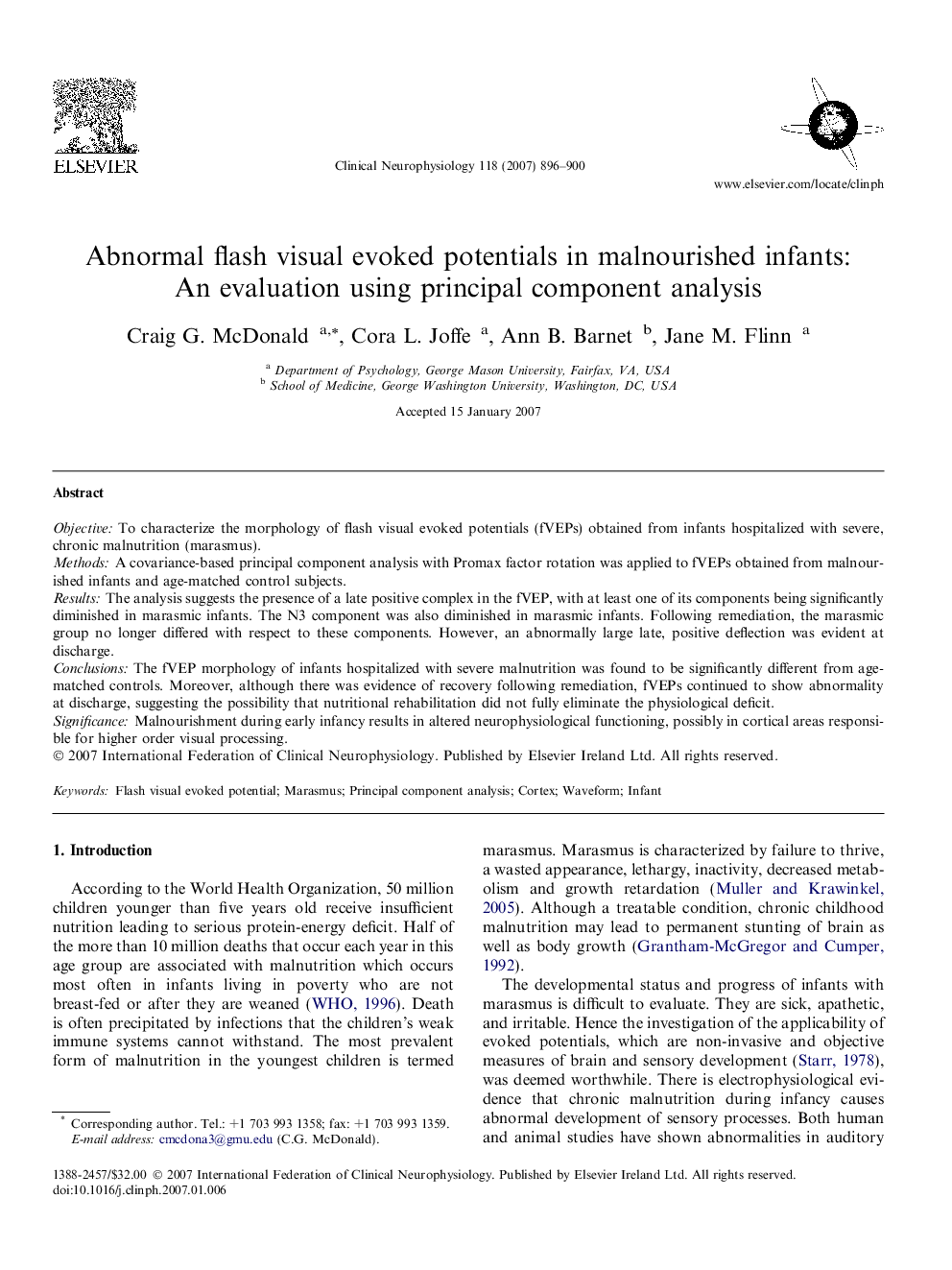| Article ID | Journal | Published Year | Pages | File Type |
|---|---|---|---|---|
| 3047920 | Clinical Neurophysiology | 2007 | 5 Pages |
ObjectiveTo characterize the morphology of flash visual evoked potentials (fVEPs) obtained from infants hospitalized with severe, chronic malnutrition (marasmus).MethodsA covariance-based principal component analysis with Promax factor rotation was applied to fVEPs obtained from malnourished infants and age-matched control subjects.ResultsThe analysis suggests the presence of a late positive complex in the fVEP, with at least one of its components being significantly diminished in marasmic infants. The N3 component was also diminished in marasmic infants. Following remediation, the marasmic group no longer differed with respect to these components. However, an abnormally large late, positive deflection was evident at discharge.ConclusionsThe fVEP morphology of infants hospitalized with severe malnutrition was found to be significantly different from age-matched controls. Moreover, although there was evidence of recovery following remediation, fVEPs continued to show abnormality at discharge, suggesting the possibility that nutritional rehabilitation did not fully eliminate the physiological deficit.SignificanceMalnourishment during early infancy results in altered neurophysiological functioning, possibly in cortical areas responsible for higher order visual processing.
